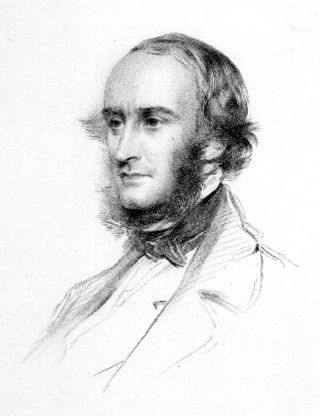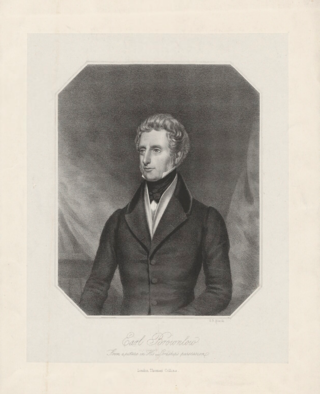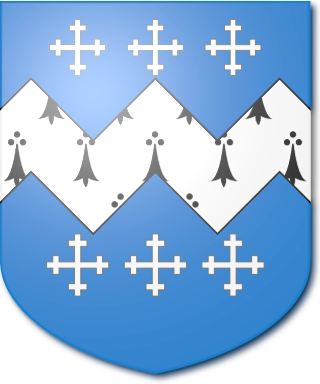
Earl of Warwick is one of the most prestigious titles in the peerages of the United Kingdom. The title has been created four times in English history, and the name refers to Warwick Castle and the town of Warwick.

Viscount Cobham is a title in the Peerage of Great Britain that was created in 1718. Owing to its special remainder, the title has passed through several families. Since 1889, it has been held by members of the Lyttelton family.

Earl of Gosford is a title in the Peerage of Ireland. It was created in 1806 for Arthur Acheson, 2nd Viscount Gosford.

Earl of Chichester is a title that has been created three times, twice in the Peerage of England and once in the Peerage of the United Kingdom. The current title was created in the Peerage of the United Kingdom in 1801 for Thomas Pelham, 2nd Baron Pelham of Stanmer.

Earl of Lonsdale is a title that has been created twice in British history, firstly in the Peerage of Great Britain in 1784, and then in the Peerage of the United Kingdom in 1807, both times for members of the Lowther family.

Earl of Gainsborough is a title that has been created twice, once in the Peerage of England and once in the Peerage of the United Kingdom. The first creation ended in extinction when the sixth Earl died without heirs. However, the title was revived in 1841 for a female-line relative.
Baron Derwent, of Hackness in the North Riding of the County of York, is a title in the Peerage of the United Kingdom. It was created on 10 October 1881 for the former Liberal Member of Parliament for Scarborough, Sir Harcourt Vanden-Bempde-Johnstone, 3rd Baronet. His grandson, the third Baron, was an author, poet and minor diplomat. On his death in 1949 the titles passed to his younger brother, the fourth Baron. He served in the Conservative administrations of Harold Macmillan and Sir Alec Douglas-Home as Minister of State for Trade and Minister of State for Home Affairs. As of 2010 the titles are held by his son, the fifth Baron, who succeeded in 1986.

Baron Colebrooke, of Stebunheath in the County of Middlesex, was a title in the Peerage of the United Kingdom. It was created in 1906 for Sir Edward Colebrooke, 5th Baronet. He held several positions at the British court. The Colebrooke family descended from the London banker James Colebrooke. His second son James Colebrooke represented Gatton in the House of Commons. On 12 October 1759 he was created a baronet, of Gatton in the County of Surrey, in the Baronetage of Great Britain, with remainder to his younger brother George. He was succeeded according to the special remainder by his younger brother George, the second Baronet. He was Member of Parliament for Arundel and also served as Chairman of the Honourable East India Company.
There have been two baronetcies created for people with the surname Heathcote, both in the Baronetage of Great Britain and both created in 1733. The holders of the first creation were later elevated to the peerage as Baron Aveland and Earl of Ancaster, which titles are now extinct. However, both baronetcies are extant as of 2008.

John Cust, 1st Earl Brownlow, GCH was a British Peer and Tory politician.

The Bradstreet Baronetcy, of Castilla in County Dublin was created in the Baronetage of Ireland on 14 July 1759 for Simon Bradstreet. His son, the second Baronet died without male issue in 1773 and was succeeded by his younger brother, a Member of Parliament for Dublin in the Irish House of Commons, and later a judge. The fourth baronet was a barrister. The latter's elder son, the fifth Baronet died childless in 1889 and the title went to his younger brother. With the death of the seventh Baronet in 1924, the baronetcy became extinct.

Sir Samuel Fludyer, 1st Baronet, of Lee Place in Kent, was an English merchant and banker who served as a Member of Parliament and Lord Mayor of London.
There have been four baronetcies created for persons with the surname Musgrave, one in the Baronetage of England, one in the Baronetage of Nova Scotia, one in the Baronetage of Ireland and one in the Baronetage of the United Kingdom. As of 2014 two of the creations are extant.

John Fane, 9th Earl of Westmorland, known as Lord Burghersh until 1771, was an English peer and Member of Parliament.

There have been two baronetcies created for members of the Barnardiston family, both in the Baronetage of England. Both creations are extinct.

Sir Samuel Fludyer, 3rd Baronet (1800–1876) was the grandson of the first Baronet, Sir Samuel Fludyer, who was reckoned at the time of his death to be the richest man in the country with a wealth of £900,000. He was the only son of Sir Samuel Brudenell Fludyer, who inherited most of the first Sir Samuel's fortune, and had his children painted by Thomas Lawrence, the foremost portrait painter of the time, indicating the family's wealth and social standing. The portrait shows Sir Samuel between his sisters Maria and Carolina Louisa.

Samuel Brudenell Fludyer (1759–1833) was an English politician. He inherited great wealth from his father, the first baronet, and social position from his mother Caroline Brudenell, the niece of the 3rd earl of Cardigan. He became a Member of Parliament, but there is no record of his having spoken in the house.
Samuel Marsh was a London merchant and politician who sat in the House of Commons from 1774 to 1780.

George Fludyer was an English politician, the Member of Parliament for Chippenham from 1782 to 1802, and for Appleby from 1818 to 1819.
Sir Thomas Fludyer was an English merchant and banker who was a Whig Member of the Parliament of Great Britain in 1767–9.










